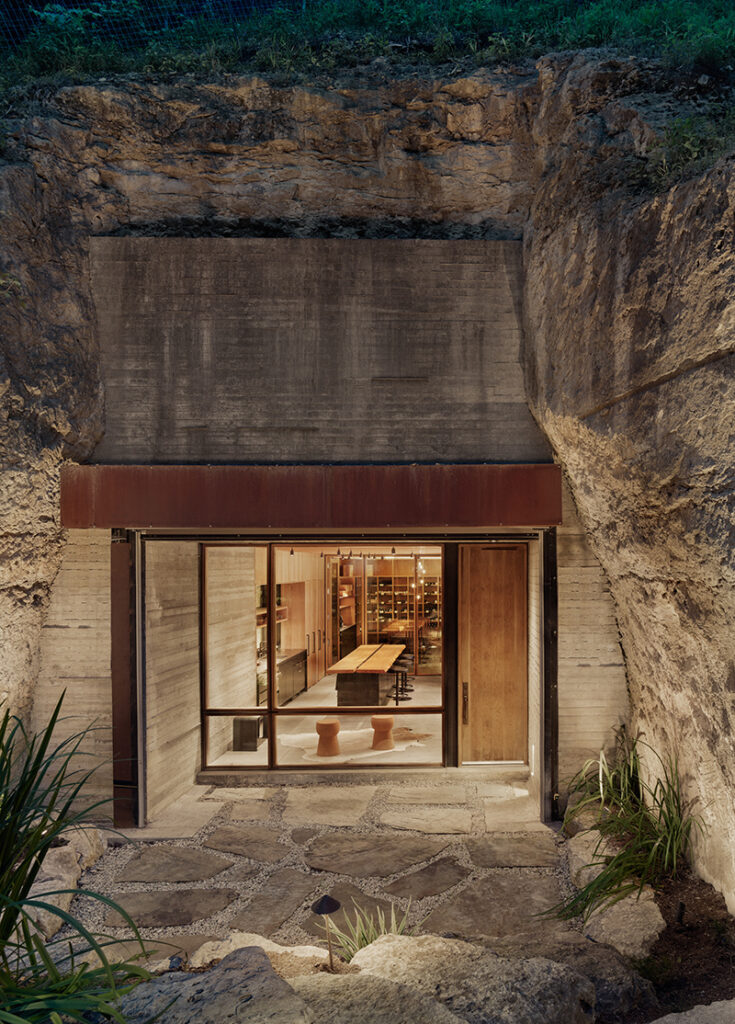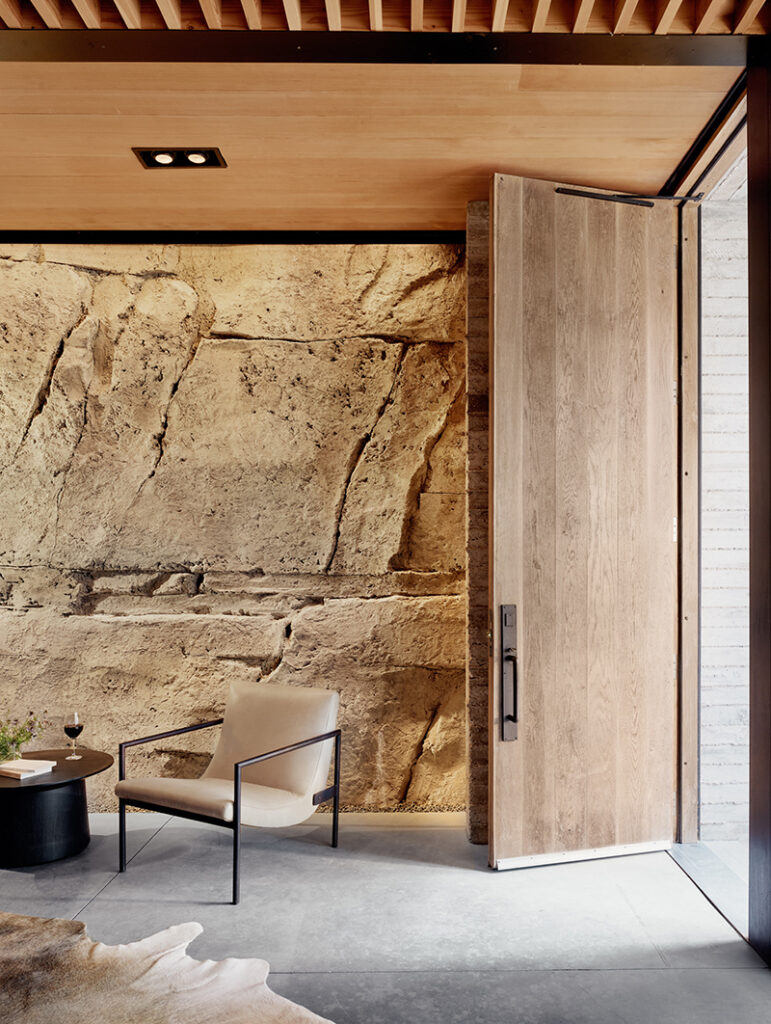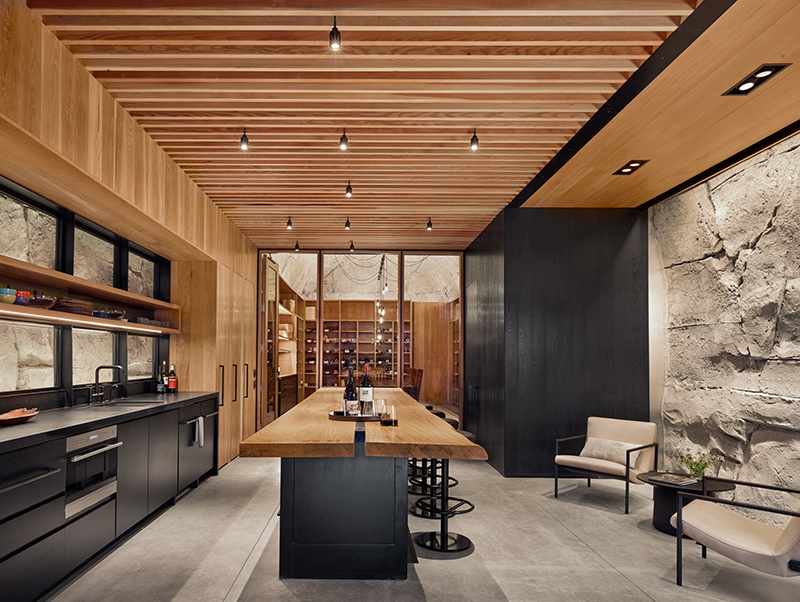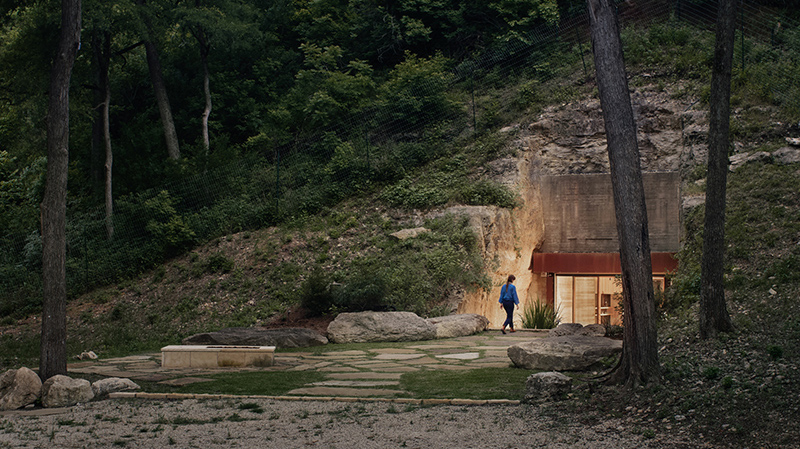
Brian Korte grew up in a family that loved to make things—cabinets, shelves, ceramics, model airplanes. And he liked to draw.
“I was exposed to detail and the level of patience required to make something well-made, but that also looks realistic,” Korte said.
He took his love of drawing and turned it into a bachelor’s and a master’s degree in architecture. He’s now a principal in the firm Clayton Korte, with offices in Austin and San Antonio. The firm is well known for a 2020 project known as Hill Country Wine Cave.
The client wanted a wine cave that would serve as a destination separate from the other buildings on their ranch, located along the Blanco River. The enhancement of an existing 18-foot-by-70-foot cave on the property resulted in a beautiful space that disappears into the hillside. Korte calls it a “non-building.”
“It’s like a ship in a bottle—like we’re building a boat in there. We pull the string, and it stands up,” he said. “It’s similar in that the constraints of this cave were a given condition, like a bottle, and we built within that constraint.”
The firm began by mapping the cave with a Matterport camera, creating a 3-D image of its irregularities. That information helped them know how to build the “ship” inside. At the mouth of the cave they created a concrete bulkhead, providing a protected entryway. Outside: Hill Country goodness. Inside: fine wine. More than 4,000 bottles of wine are kept in the deepest part of the cave, with an optimal atmosphere of 55 to 60 degrees.
“People have been storing wine underground for centuries, leveraging the cooler temperatures and lack of direct sunlight,” Korte said.
The cave’s front area is designed for enjoyment, with a bar, lounge, and restroom. The walls are a mixture of raw and ebonized white oak paneling, and the ceiling is vertical grain Douglas fir. Reclaimed cedar becomes countertops. The lounge space is held away from the cave walls, like a “ship.” What you don’t see is the “bottle” shell, a 6- to 8-inch shotcrete liner.

“Shotcrete is concrete shot through a hose. Artisans sculpted it to make it look like natural stone. Most people, when they see photographs, they think it’s limestone,” Korte said.
Steel cage reinforcements within the shotcrete make it possible to run electric conduits or fire sprinkler lines—all of which are hidden from view.
The firm has worked on projects with other wineries and vineyards, mostly on the California Central Coast. Because the ground temperature in the Texas Hill Country is at least 10 degrees warmer than in California, and because the soil is filled with rock, which acts as a natural heat sink, the team decided to provide supplemental cooling for the wine storage area, to ensure consistent temperatures.
The cave has won virtually every award possible, including the Architizer A+ Award, the American Institute of Architects Small Project Award, and the Texas Society of Architects Design Award. The recognition has attracted talented architects who want to work for Clayton Korte, along with potential clients who think they might want something similar. Or something else entirely.
“Some, they see this and call us about building a hotel,” Korte said. “Several love this project and want to do something like it on their property, which often leads to building something else—something they haven’t considered.”
Korte says building on Hill Country sites, most of which are a couple of hours from San Antonio or Austin, takes patience. Crews have a long way to travel. Summer’s hot. Autumn is always busy. But the result is a resilient structure, a destination within a destination.
“It all looks like it did when we first installed it because it’s protected from sun, rain, and temperature. The bulkhead takes the weathering and ages gracefully,” Korte said. “It disappears back into the hillside.”
View photos of Hill Country Wine Cave at



